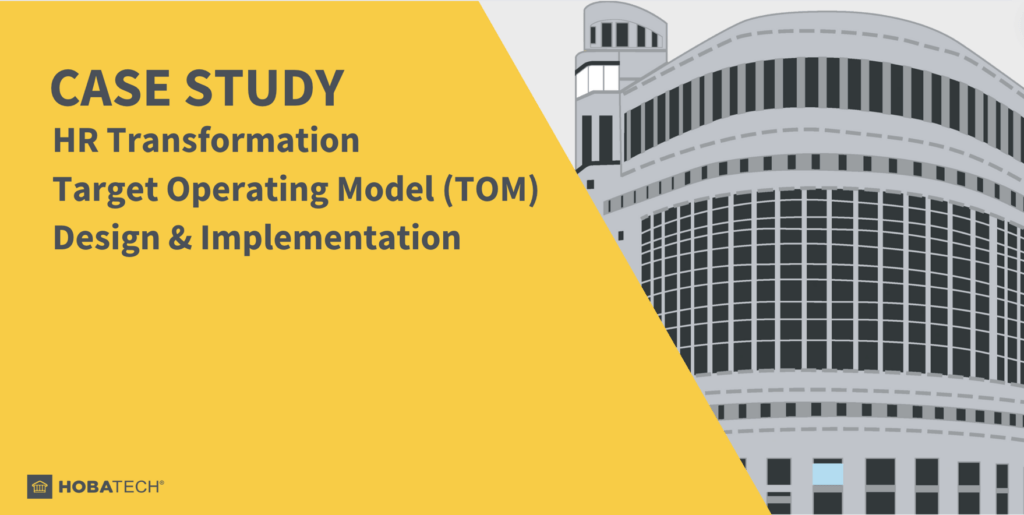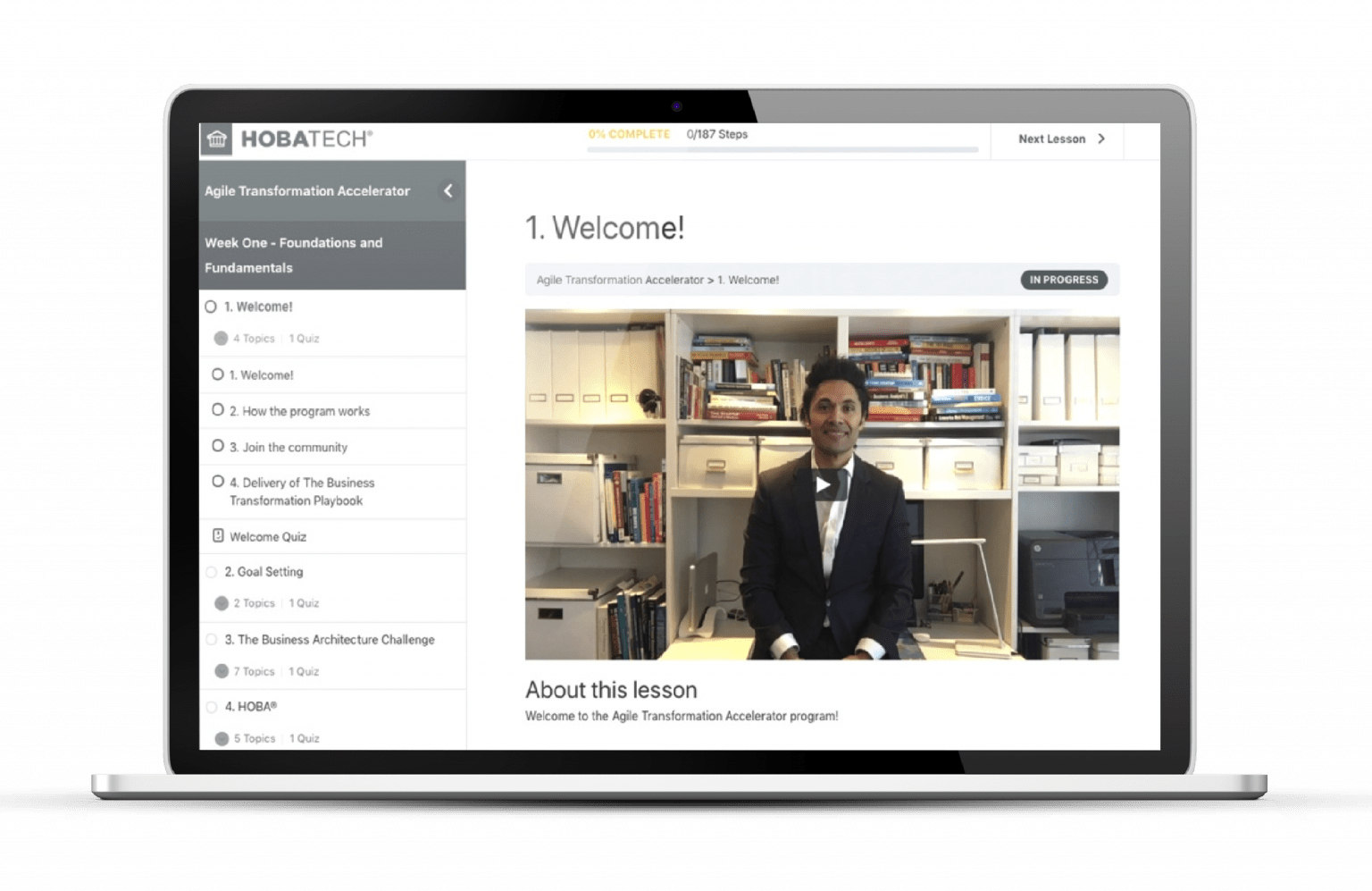Case Study >> Human Resources (HR) Transformation – a HOBA® Case Study
HUMAN RESOURCES (HR) TRANSFORMATION - A HOBA® CASE STUDY
Like this Post? Share it 😁
DOWNLOAD CASE STUDY

Like this Post? Share it 😁
Download this case study for free!
Download the HR Transformation Case Study and learn how the HR Transformation project would form the first trance of deliverables for the Organisations Operational Transformation Programme (OTP) but it was not off to a good start.
The Client had tried this once before, they brought in an external Consultancy, but the usual thing happened.
That Consultancy done what have given Consultants and Consultancies a bad name. They produced some colourful presentations, created some pretty diagrams and models, used interesting names and jargon that looked and sounded very impressive.
The HR Division managers and staff was asked to identify the services they carried out and provided to the Organisation. This activity highlighted three (3) problems:
- The first problem, the term ‘services’ is a foreign word and concept to the HR Staff. They perform ‘processes’, they call them processes and carry out processes. They even have these processes documented (they may be incomplete and out of date, but this is what they do). The IT Division who is in charge of all change and transformation projects and programs in the Organisation, who of course also run and maintain the IT for the Organisation – do however use the term ‘services’. They actually proudly say “We are an ITIL shop”.
- This is the second problem. ITIL stands for “Information Technology Infrastructure Library”. ITIL is a set of IT practices and activities to manage IT services and IT asset management. The framework they were using was not made to change or transform Business. They were using the wrong tool. Technology was effectively forcing their ways of working onto the Business, not understanding the Business, and using and speaking with them in their (Technology) terms.
- This was the third problem. The Consultancy called these services a “Taxonomy”. A Taxonomy is a way or technique to classify things. It tells you nothing more than a name or label. It doesn’t tell us WHO is involved in that service?, WHAT is the purpose of that service?, WHAT is the inputs nor outputs. The Project is using language that the Business doesn’t use, know nor understand. It was interesting but useless.
These three (3) problems combined was the start of the disengagement the Business had with the project and their own transformation. The longer this situation continues where the Project (The Consultants) speaks to the Business (The Client), giving lip service to their concerns and needs, the worse the situation gets.
The HR Team were asked to complete an assessment of ‘services’ in their Division and their own teams that were low, medium or high areas needing attention, or were in need of changing because they were not working well, or as well as expected.
At the end, they had lost time, were left with a bill, and had some pretty diagrams and presentations telling them effectively what they already knew. Sadly, it was Interesting, but useless.
They were no closer to solving the problems, let alone identifying the root-causes of those problems in the first place.
They didn’t know what the future would look like (what the staff would actually be doing on a day-to-day basis), nor a view of “what good looks like”?
They didn’t have a Vision of what the HR Division stood for, and what it meant to the Division itself, nor for the Organisation as a whole, that through a line item in each individual Division P&L statement pays for and funds the HR Division – for HR Services, out of an expense to their own divisions, as is the case with most Organisations of this size.
And most of all, they didn’t involve the stakeholders in and across the business who carry out the HR work and deliver the HR services, their managers, Division Managers and Directors and Corporate Executive Team (CET) members to ensure that their needs and concerns were understood, before then being addressed. None of that was done. And that is why we got called in.
Download the case study and learn how we solved it not only with less stress, less effort, less time and less cost to the Client. We also did it with a skeleton team (namely, mostly the Clients own staff, ensuring that full knowledge transfer and experience actually eventuated) but with full support and endorsement of the everyone involved from the Project, HR Operations and Management, Division Staff and Management and the Corporate Executive Team, getting the TOM and roadmap to implementation signed off at the board first-time earning the name “one-and-done”.
Download the HR Transformation Case Study and learn how you can do it too!
LEARN FROM THIS CASE STUDY
Contrary what you are told or hear, successful business transformation doesn’t have infinite steps. It has 6-steps.
You will learn in this case study how the UK Government used our 6-step process to deliver real actual tangible value and results to not only the HR Divsion, but the Organisation as a whole.
You will learn how it got not just the HR Division onboard with the process, but also the Division Managers, Leaders and Corporate Executive Team (CET) – so onboard, the CET signed off the Target Operating Model (TOM) and roadmap for implementation – that addressed all the pain-points the Organisation was facing today, and forecast would face in the future, and that would build the strategic capability and capacity it needed to fulfil its new Vision* (defined as one of the first activities due to its importance and role as the No.1 Requirement on the transformation) – not only in record time, but the first time any paper in the history of the Organisation earning the name “one-and-done”.
Here is that process:
Step 1 - Focus
Used to define what the ‘end looks like’ (i.e. Vision) that the Organisation is aiming for (The No.1 Requirement*)
Step 2 - Control
Used to define the governance framework to control decisions, scope, risks, assumptions, issues and dependencies
Step 3 - Analyse
Used to define the ‘As-Is’ current operating model, pain points and improvement opportunities
Step 4 - Analyse
Used to define and prioritise the Business Benefits the Organisation plans to realise from the Business Transformation
Step 5 - Design
Used to define the ‘To-Be’ Target Operating Model (TOM), addressing the needs of the Organisation
Step 6 - Implement
Used to develop the plans and roadmaps to implement the physical TOM and manage benefits realisation
Note:
(*) ‘The Vision is the No.1 requirement on the transformation, as every requirement under it needs to trace from it, and back to it, in a two-way traceability. The Vision is broken down into its Strategy (or Strategies), Objectives and Measures as follows:
- Vision - this addresses the WHY? question (Why are we doing this?)
- Strategy - this addresses the HOW? question (How are we going to achieve this Vision?)
- Objectives - this addresses the WHAT? question (What is the Objective of each of Strategy?)
- Measures - this addresses the WHEN? question (When will each Objective be achieved?)
The Vision is captured in the Vision, Strategy, Objectives & Measures (VSOM) Map. To learn more about the VSOM Map or to download a FREE template, click here.
🚀 'We turned around a failing HR transformation in record time using a skeleton team of mostly the client’s staff. By ensuring full knowledge transfer and stakeholder engagement, we delivered a compliant and future-ready Target Operating Model.' - Heath Gascoigne 🌟 Discover how we achieved this and how you can too! Read the full case study here 👉 #HRTransformation #BusinessTransformation #Leadership #HOBA #Innovation #Agile 📈✨
Heath Gascoigne Tweet
Transform your Organisation with this simple process!
Transforming your business takes planning. Discover the process used in this case study for a stress-free, efficient, and profitable transformation.


